Photographs: Trans World Features
As we celebrate Teacher's Day, let's take a trip back in time and visit some of the devout gurus from Indian mythology and learn about their contribution to the society.
While September 5, commonly celebrated as Teachers' Day may be more popular among the younger generation in its current form, the tradition of students (read shishyas) paying their respects to their teachers (read gurus) traces its origins to an ancient era. An era where knowledge was passed on from one generation to another by a set of highly devout members from society, who were either saints or academic scholars, who had procurred knowledge through years of penance, meditation and learnings from nature and travel.
Back then, the school was synonymous to a gurukul where shishyas were absorbed into the system by gurus, who trained them for various life skills through scriptures and activities, both intellectual and physical.
During these years of learning, usually a shishya is expected to stay away from the family under the mentorship of the guru.
The relationship between the guru and shishya was one of respect and devotion that was earned naturally over the years by the former, with his supremacy of skill and knowledge.
Their advice and suggestions were always considered important and influential in political, social and economical matters of the State.
Influenced by a popular legend, when a shishya finishes his education and is ready to leave the gurukul, he is expected to pay back his gratitude for the guru in the form of gurudakshina. This ritual is widely celebrated in India as 'Guru Poornima' when a student pays his respect to his teacher in the form of gurudakshina.
Realising the importance of Guru, we profile the most influential gurus from mythology of all times.
...
Ved Vyas
Image: Maharshi Ved VyaVyasa himself played a part in the epic -- he was grandfather to both the Kauravas and Pandavas, the warring brothers in the Mahabharata and appears as advisor at several junctures. It is believed that the work was dictated by the sage to Lord Ganesh, who acted as scribe and dutifully wrote it all down.
A section of the Mahabharata, called the Vyasa Jaya covers subjects like geography, history, warfare, religion and morality. It also includes the Bhagwad Gita, the sacred text of the Hindus, which deals with Lord Krishna's teachings to Arjuna and the world at large.
Ved Vyas was known to meditate at the foothills of the river Beas in Uttar Pradesh. In fact, it is believed that during their exile, the Pandavas visited him at the ashram in Vedhagiri and sought his advice before the war.
Vyasa even taught Dattatreya, the Hindu deity encompassing the trinity of Brahma, Vishnu and Shiva collectively known as Trimurti. He is regarded as the Guru of Gurus.
The festival of Guru Purnima is celebrated as a tribute to him.
Lord Brahma
Image: Lord BrahmaA part of the trinity, which also includes Vishnu and Mahesh, Lord Brahma is known to be the Hindu God of creation -- the one who created the elements of the Universe, including the planetary systems and living beings on Earth.
Legend says that Lord Brahma was self-born inside a lotus flower, from a seed that was later on known as the golden egg. That explains why he is always seen sitting inside a lotus and often besides his daughter, Goddess Saraswati, also worshipped as the Goddess of Learning, who is known to be mentored by him.
It is also believed that the contents of the egg that gave birth to Lord Brahma expanded and metamorphosed into different forms and elements of the Universe, which we see today.
Lord Brahma, who has four arms and four heads, has significance attached to each of them.
Among the eight arms, four represent the four directions, namely east, south, west, and north. Meanwhile, the back right hand represents the mind, the back left intellect, the front right ego and the front left self-confidence.
The book that he holds in his hand symbolises knowledge and wisdom.
The lotus on which he is seated symbolises the importance and relevance of nature and living beings in the universe.
The four faces/heads are representative of the four Vedas, namely the Rigveda, Sāmaveda, Yajurveda and Atharvaveda.
Dronacharya
Image: Dronacharya teaching archery to his studentsAlso known as Drona, he was guru to both the Kauravas and Pandavas. Known for his mastery in the military arts, his favourite student was Arjuna.
Among the most popular legends that emphasise his supremacy of skills in archery is this: One day, while Dronacharya was on a visit to Hastinapur, he saw a small group of young boys, gathered around a well. Curious to know what was happening, he approached them and enquired what they were upto. The boys, who were none other than the Kauravas and Pandavas, told him that while playing a game, their ball had slipped into the well and they were thinking of a way to get it out.
Drona, who was known for his arrogance, laughed at their helplessness. Hearing his laughter Yudhisthir, who was the eldest among the boys, challenged Dronacharya to retrieve the ball -- if he did, Yudhisthir promised, the king of Hastinapur would in return provide him with everything he would require for the rest of his life.
Drona accepted the challenge and set to work on the task. He looked around, collected some blades of grass, chanted a mantra in his mind and threw the first blade of grass into the well. To everyone's surprise, it stuck to the ball, which was floating in the water. He then took another blade and repeated the procedure. This time, the second blade stuck to the first.
He repeated this action several times, till a chain of grass was formed. To everyone's amazement, Drona easily pulled the ball out of the well.
The boys then took Drona back to their kingdom to meet their grandfather, following which he was asked to mentor the Kauravas and Pandavas in warfare and military training.
Dronacharya is a debatable figure in the epic with regards to his principles, ethics, morality, thoughts and actions. But that doesn't take away the credit that he was a great teacher and mentor.
Vashist Rishi
Image: Vashist Rishi with his disciplesOne of the seven rishis (saptarishis), Vashist Rishi is also known as Lord Ram's guru. Besides, he was also the royal guru of the Ikshwaku dynasty.
Vashist Rishi not only possessed great wisdom, but he was also a lover of peace and tranquility. Some of his shlokas that explicate his wisdom are mentioned in the Vedas as well.
The story of how Lord Ram found a teacher in Vashist Rishi goes like this. Lord Ram, who had just returned after touring the world, was frustrated and disillusioned by what he saw around him. Concerned about his son's change in behaviour, Lord Ram's father King Dasaratha consulted Vashisht Rishi and sought his help to look into the matter.
Thus, Lord Ram was offered a discourse by the rishi over the next few days. This discourse, which answered Lord Rama's questions about the universe, is also known as the Yoga Vashista.
Lord Krishna
Image: Lord Krishna advising Arjun during the War of KurukshetraAn avatar of Lord Vishnu, the Mahabharata states that Lord Krishna was popular among young and old alike, ever since he was a child. He not only saved the people of Vrindavan, where he lived, but also impressed them with his supremacy of tact and skills.
His significance as a guru comes across during the Kurukshetra War in the epic. Krishna agreed to be charioteer to Arjuna, on the condition that he wouldn't directly fight for the Pandavas.
Upon learning that he would have to fight his own family members, Arjuna dropped his weapons and proposed that he wanted to quit the war.
On hearing this, Lord Krishna counselled him and urged him to war. This piece of advice lasted for several days and is spread across 18 chapters -- the Bhagavad Gita -- which branches out of the epic Mahabharata and is the sacred book of the Hindus.
The Bhagavad Gita discourse explores and unveils man's various attachments on earth (which include blood relationships), the importance of duty and responsibility towards oneself and society at large and throws light on the true purpose of life on Earth.
Valmiki
Image: ValmikiValmiki is popularly known to the world as the author of the epic Ramayana, which narrates the story of Lord Ram and Sita, his wife.
Interestingly, the Ramayana is one of the few epics in history that could be sung as a poem. Hence, it is also known as the Adikavya (first poem) and the author/poet Valmiki is known as Adikavi (first poet).
Besides, Sage Valmiki is also known to be the guru of Lord Ram's sons Lav and Kush.
He taught them the Ramayana, which was once narrated to him by the Sage Narad Muni.
Both the stories of the Ramayana and sage Valmiki are interconnected in a way that tells us how the lives of common men are transformed when they come into the company of good people.
Vishwamitra
Image: VishwamitraHe is popularly known as the author of the Gayathri Mantra, a shloka which, when recited, is meant to illuminate your inner self and rescue you from ignorance.
He is also known to be the guru of Lord Ram and Lakshman. Sage Vishwamitra taught them the Devastras -- the knowledge and use of celestial weapons in war.
He also taught them about advanced religion and mentored them in assasinating several demonic characters mentioned in the Ramayana.
It is believed that Sage Vishwamitra also led Lord Ram to Sita's swayamvar ceremony, where he overpowered all her suitors by his impressive strength and valour by meeting the challenge of lifting the Shiv Dhanush (Lord Shiv's bow) and stringing it.
Among a host of legends that speak highly of his teachings and their influence on mankind and society is also Vishwamitra's concept of heaven and hell, which is highly debatable and still beyond the reach of scientific discovery.



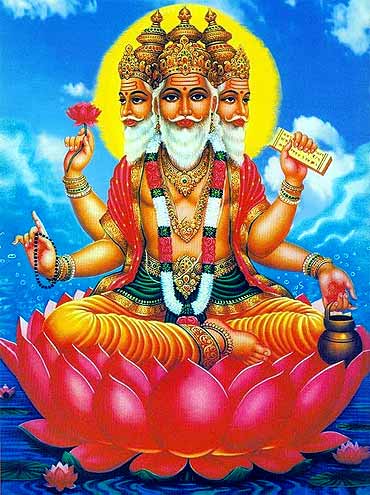
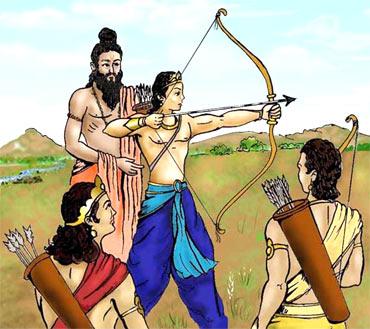
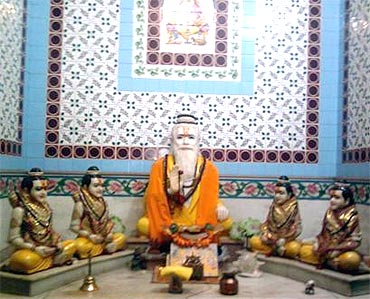
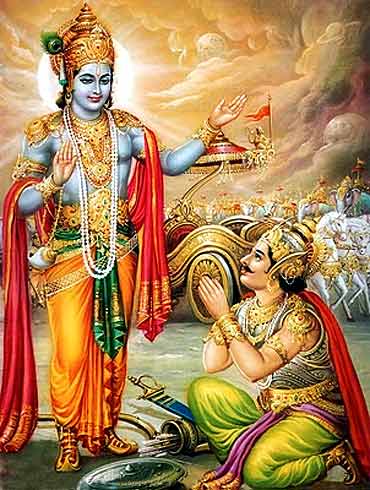
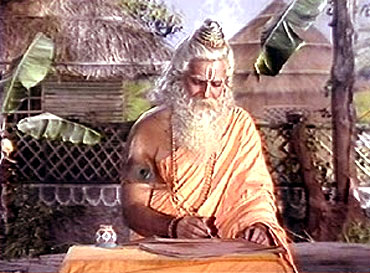
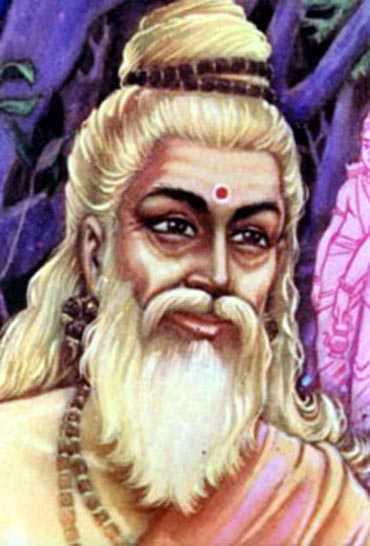
Comment
article